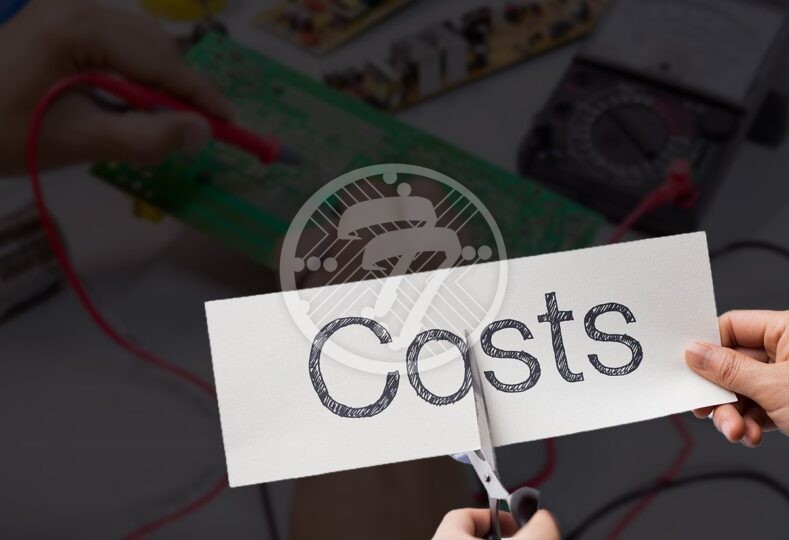How can SMT (Surface Mount) Assembly Process help to reduce manufacturing cost?

Surface Mount Technology is essentially a constituent assembly technology that works by attaching and linking components on the board surface through solder-reflow procedures. It offers a number of benefits including the fact that it lends itself to miniaturization as it allows components to be placed in a relatively small space. SMT also is a great enabler when it comes to automated PCB assembly.
Cost-Effective technique
One area where SMT scores significantly is on the aspect of cost saving. While there is an initial expenditure in terms of machinery cost, the positive side is that the machines go a long way in minimizing the manual procedures. This results in a dual benefit. The first that the long-term labor cost is reduced. Importantly, it goes a long way in improving production efficiency, which in turn, lowers cost. With surface mount assemblers using a software to digitally assemble the board prior to actual production, possible errors are minimized. It also has a positive impact in terms of minimizing delays that can prove to be costly.
Here is a detailed analysis of the entire SMT Assembly process that will enable you to understand the cost reduction possibilities at various stages.
The broad stages involved in the SMT assembly process include:
- Solder Paste Printing
- Solder Paste Inspection
- Chip Mounting
- Visual inspection
- Reflow soldering
- AOI
- X-Ray Inspection
- ICT
- Functional testing
- Depanelization
Solder Paste Printing
This process involves placing an accurate amount of solder paste onto the pad on which the components are to be soldered. For this it is not only important that the solder paste is applied well but also that it is stored correctly at low temperature and brought to room temperature prior to application. In addition, due attention needs to be paid to the scraping angle and speed.
Solder Paste Inspection
This step goes a long way in reducing costs as it helps detect SMT Soldering Defects early. What it enables you to do is to prevent costly defects in the later stages of manufacturing.
Chip Mounting
An essential component of the SMT assembly process, this is completed by way of chip mounters. While small components are placed by way of high-speed chip mounters, the larger components require multi-function chip mounters that run at a low speed.
Visual Inspection
The process of visual inspection once again ensures that any defects can be identified early. Some of the errors that can be identifies at this stage include any missing parts or lack of proper placement. Post the reflow soldering it will be very hard to deal with these defects. Once again, this stage of SMT assembly allows scope for keeping costs in check as if this stage isn’t carried out, you can expect that to rectify the errors later, the production cost will rise.
Reflow Soldering
This process involves melting the solder paste to be able to connect the components to the board. It is the temperature profile setting that determines the reflow soldering capability as also reducing the production costs. A professional assembler can go a long way in keeping the costs in check.
Automated Optical Inspection
At this stage the performance of solder joints is thoroughly inspected. Some of the errors that can be detected at this stage, include:
- Tombstone
- Edge On
- Missing Components
- Misplacement
- Bridging
- Empty solder, and more
Automated X-ray Inspection
Once again, X-ray inspection is a great way to ensure high efficiency of the product and to not having to contend with product defects once the product is sent out into the market.
ICT or Function Test
This test checks for opens and shorts and exposes any defects of components by measuring aspects such as:
- Resistance
- Capacitance
- Inductance
Function tests also go on to test the functions of the assembled PCB to ensure that the final product is extremely reliable.
Over all, therefore, the SMT process has a number of in-built checks to avoid costly errors. These measures drive the final products to display high reliability and integrity. Little surprise then that Surface mount technology for PCB assembly is generally considered to be the lowest cost and minimum hassle process when it comes to new designs.
At Technotronix, we are highly cognizant of the above guide. We have over 40 years of experience in SMT PCB Assembly. With automated SMT Assembly process our boards ensure optimal performance in the most challenging applications. If you are looking for progressive SMT PCBs solutions, you are at the right place. To know more, please explore our PCB Assembly Services!
Request a quick SMT Assembly quote!






